Edibles are an excellent way to enjoy cannabis. They give you a longer-lasting high than smoking weed, and you can enjoy a delicious treat at the same time! Cannabis is highly versatile as a cooking ingredient — you can add it to desserts, snacks, smoothies, teas, and more.
The best thing is that cooking with cannabis is versatile, which means you can make edibles that are sugar-free.
Edibles for diabetics: tips and common mistakes
There aren’t too many options for ready-made, healthy weed edibles. So if you’re looking for edibles that won’t spike your blood sugar or hurt your diet, your best bet is to make them yourself.
Luckily, it’s not too difficult to make sugar-free edibles, though there are a few things you should keep in mind.
Top tips for healthy weed edibles
- Don’t limit yourself to desserts – edibles can be so much more than brownies and gummies. Get creative by swapping out butter or oil for cannabutter or cannaoil in your favorite savory recipes!
- Take your time – preparing cannabutter or cannaoil is a lengthy process, so allow plenty of time for the overall process, and be sure to keep an eye on the butter while cooking to avoid burning.
- Save your top-shelf flowers for smoking, as you will likely lose much of the taste and impact through the long cooking process.
- Store edibles carefully and keep them away from children, especially gummies and sweet treats.
Common mistakes and how to avoid them
1. Using the wrong sugar alternatives:
- Fruit juice is an excellent, all-natural sweetener – it particularly works well to add sweetness and flavor to homemade weed gummies.
- You can also use Stevia or another sugar-free sweetener.
- You can also try hemp-infused sweeteners, such as hemp-infused stevia. These are great for adding to tea, coffee, smoothies, or you can even use them in baking!
2. Not decarboxylating the cannabis first: It’s vital to decarb your cannabis or hash before using it in cooking – more on this below!
3. Consuming too much or on an empty stomach: Never consume edibles on an empty stomach and be sure to take it slow, especially if you’re new to edibles. Remember that it can take well over an hour or more for edibles to have an effect, so start with small doses.
The importance of decarboxylation when making sugar-free THC edibles
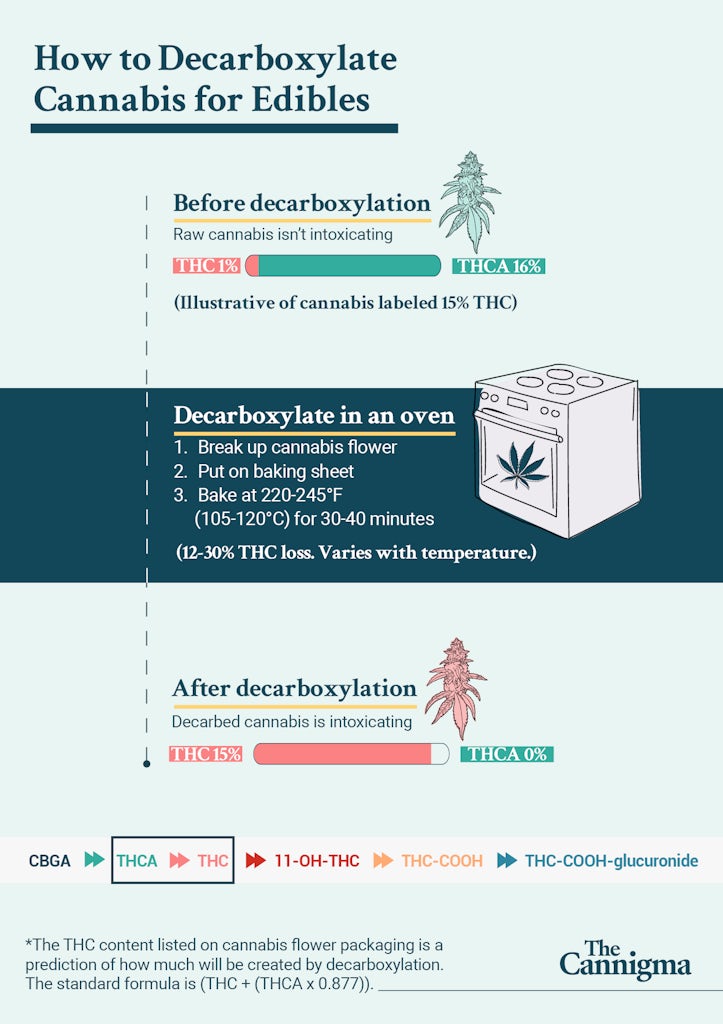
The first thing you need to know about cooking edibles — sugar-free or otherwise — is decarboxylation. This may sound complicated, but it is essentially the process of heating cannabis or hash to high temperatures for a long period in order to activate the THC.
This is essential because the cannabis plant does not contain THC – instead, it has a cannabinoid called THCA. When exposed to certain temperatures, the THCA will turn into THC.
The most common way to decarboxylate cannabis is to bake it in the oven at 220-245°F (105-120°C) for about an hour.
Edible Calculator
How strong is your cannabis infusion?
Cannabutter and cannaoil recipe
The easiest way to make sugar-free edibles is to start with cannabutter or cannaoil. You can then use this THC-infused butter or oil as a base for a wide range of recipes. You can essentially swap out regular butter or oil in any recipe with cannabutter or cannaoil.
Using cannabutter or cannaoil as a base for edibles is essential, as cannabinoids like THC are fat-soluble and need to be consumed with fat to be broken down and absorbed by the body.
How to make cannabutter
What you’ll need:
- 7-14 grams of ground, decarboxylated cannabis (depending on your preferred dose)
- 2 sticks of butter
- 1 cup of water
- A saucepan
- Cheesecloth
- Storage container
1. Place the butter and water in a saucepan. Heat and simmer until the butter melts.
2. Continue simmering the mixture and gradually add the cannabis, stirring well.
3. Keep simmering on low heat for two to three hours, stirring occasionally. Keep the heat at 160-180°F (70-80°C) and be careful not to let it come to a boil.
4. After two to three hours, remove the pan from the heat and let it cool.
5. Strain the mixture through a cheesecloth to remove the cannabis grounds and store in a storage container.
How to make cannaoil
This is a very similar process to making cannabutter, though you won’t need to dissolve the oil in water and the cooking temperature is slightly different.
What you’ll need:
- 7-14 grams of ground, decarboxylated cannabis
- 1 cup olive oil, coconut oil, or MCT oil
- A saucepan
- Cheesecloth
- Storage container
1. Place the oil in a saucepan and heat to 130-150°F (55-65°C).
2. Keeping the mixture at this temperature, gradually stir in the cannabis.
3. Keep simmering on low heat for one to three hours, stirring occasionally. Keep the heat between 130° and 150°F (55° and 65°C) and be careful not to let it come to a boil.
4. After one to three hours, remove the pan from the heat and let it cool.
5. Strain the oil through a cheesecloth to remove the cannabis grounds and store in a storage container.
How much weed should I use in my edibles?
It’s critically important to ensure correct dosing when making sugar-free edibles. Edibles both take longer to have an effect and last longer than smoking cannabis. Therefore, if you don’t choose the proper dosage, you can easily end up with a more intense high or simply a different effect from what you were looking for.
There is no one-size-fits-all when it comes to cannabis dosage. However, as a general rule, seven grams of cannabis per cup of butter will produce a mild to moderate dose, while 14 grams per cup will result in a medicinal-level dose. If you are looking for a very mild buzz, you can go for as little as three grams per cup of butter.
Of course, not all cannabis is created equally, and neither is all cannabutter. Since every batch can vary based on many factors like the chemical profile of the flower, length of decarb, age of flower, oil used, and more. Therefore, any time you’re using a new home-made extract, be extra mindful of dosing as strength can be different from the last time you made it.
The most important thing is to experiment in order to find the right dose for you. If you’re new to edibles, always start with a lower amount of cannabis and gradually increase your dosage over time.
Also be sure to store your edibles responsibly, keep them out of reach of children, and only eat edibles that you’ve made yourself or have been given to you by someone you trust.
Recommended for you
Unprecedented smoke smoothness. This is how every pipe should be; lots less coughing and more protection for your lungs.
Order NowOur favorite sugar-free edibles recipes
Here are some fantastic diabetic edibles recipes you should try today! Not all of these recipes are sugar-free, but you can replace the sugar with sweetener or stevia, for example.
1. Gummies
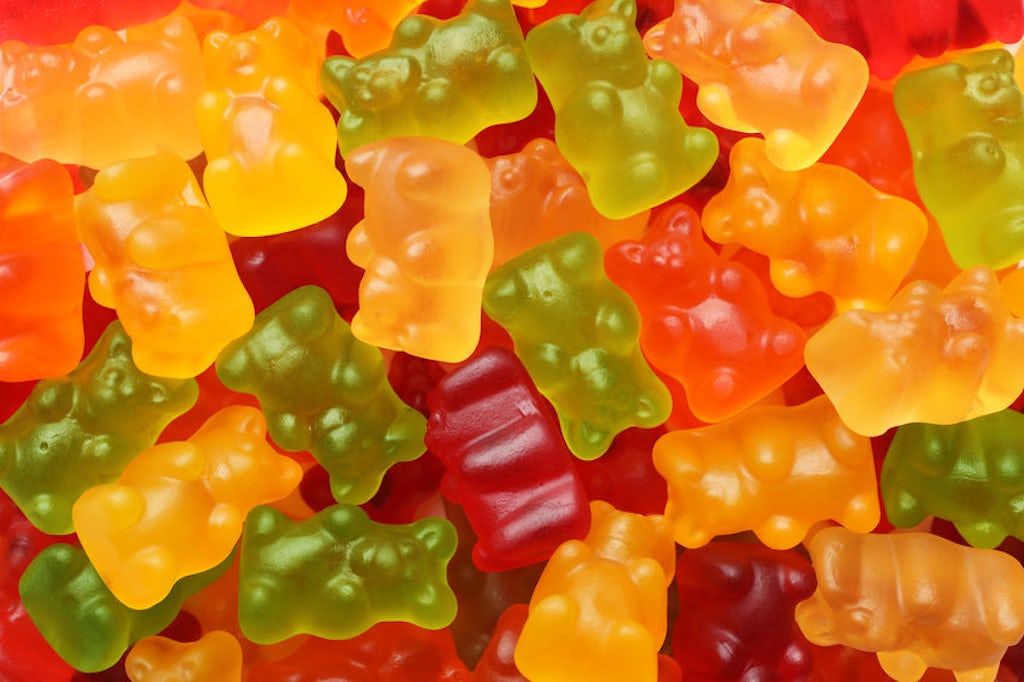
Once you’ve prepared your coconut cannaoil, mix it with sunflower or soy lecithin over low heat and stir in gelatine - make sure to use sugar-free gelatin/jello. Drop them into gummy molds, pop them in the freezer, and you’ll have tasty gummies in just 20 minutes!
2. Smoothies
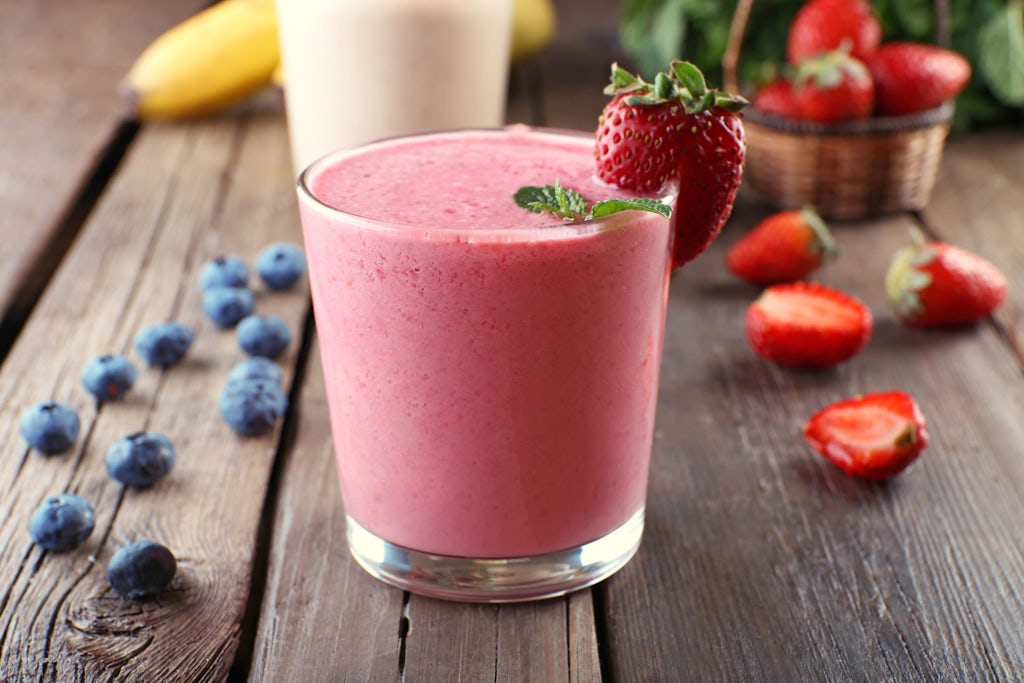
To make this delicious sugar-free smoothie, simply blend together cannaoil, plain yogurt, strawberries, banana, and a milk of your choice. You can customize your smoothie to your tastes and desired sugar levels, and you can skip the cannaoil by substituting the milk for cannamilk.
3. Tea

There are plenty of ways to make sugar-free marijuana tea, including with cannabutter, cannaoil, a tincture, weed stems, or weed-infused sweetener.
4. Popcorn

Simply top your cooked popcorn with melted cannabutter, regular butter, oil, and salt, you’ll have a delicious sugar-free treat.
5. Peanut butter
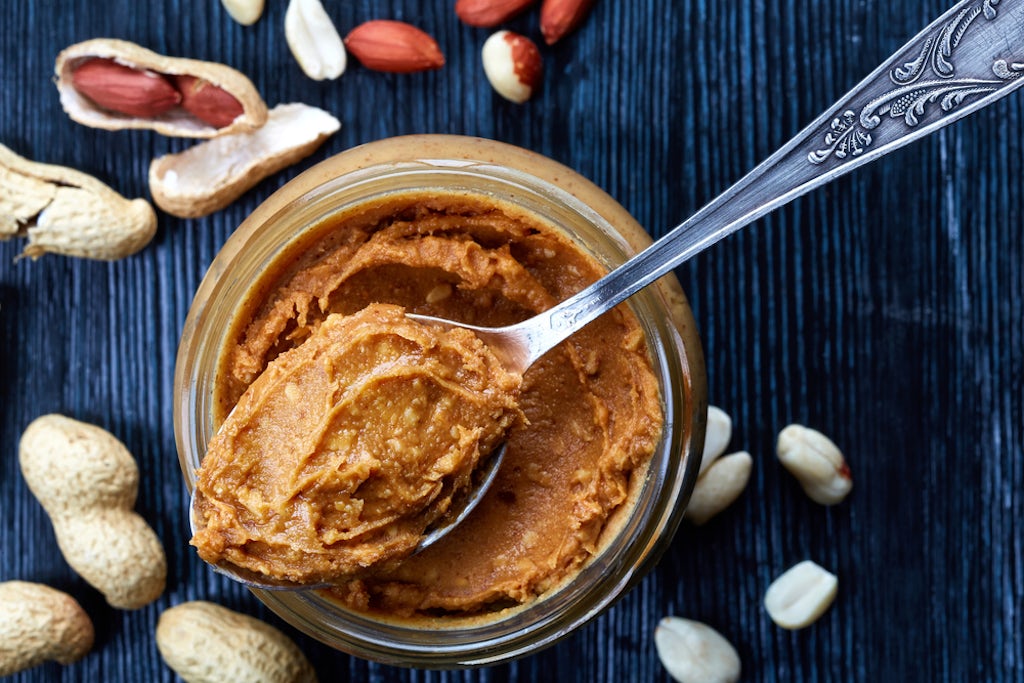
Just pulse raw, shelled peanuts in a food processor with cannabis-infused peanut oil, sweetener, and salt and you’ll have marijuana peanut butter to enjoy with celery sticks, apples, or any other healthy snack.
Remember to “start low and go slow” when it comes to trying out a new batch of cannabis-infused edibles. Try a small serving first, and wait a few hours to see how you feel before consuming more.
Whether you have diabetes or are simply health-conscious, these sugar-free edibles are simple to make and taste delicious. You won’t miss the sugar at all.
Sign up for bi-weekly updates, packed full of cannabis education, recipes, and tips. Your inbox will love it.

 Shop
Shop Support
Support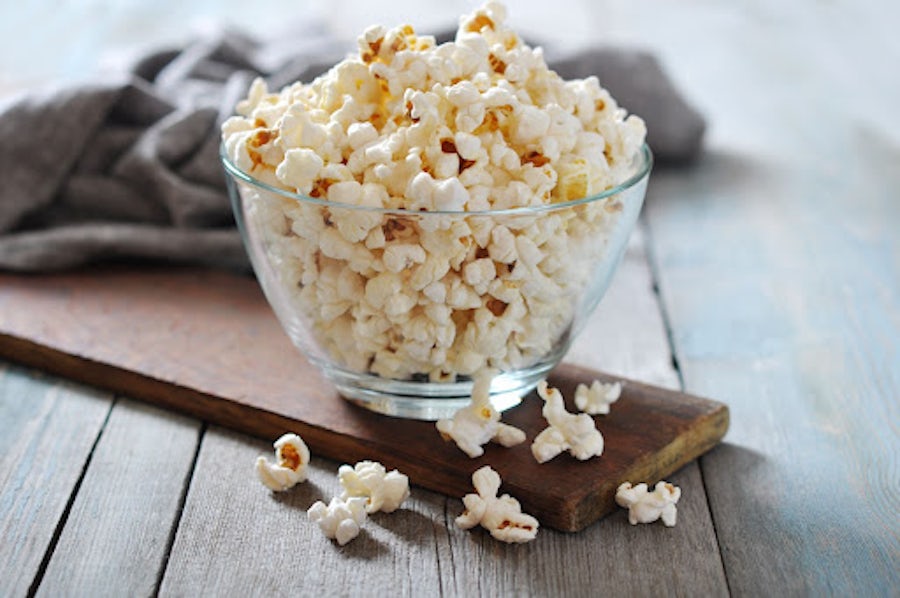

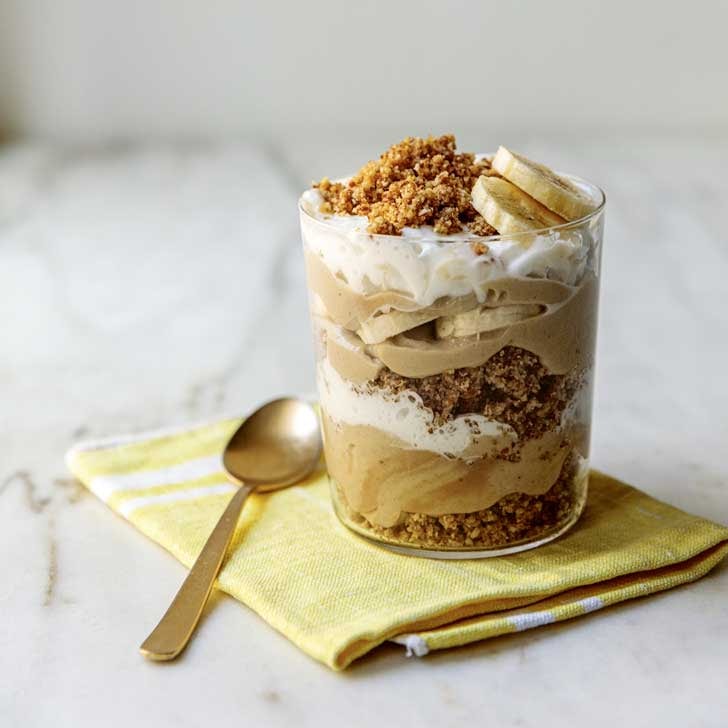
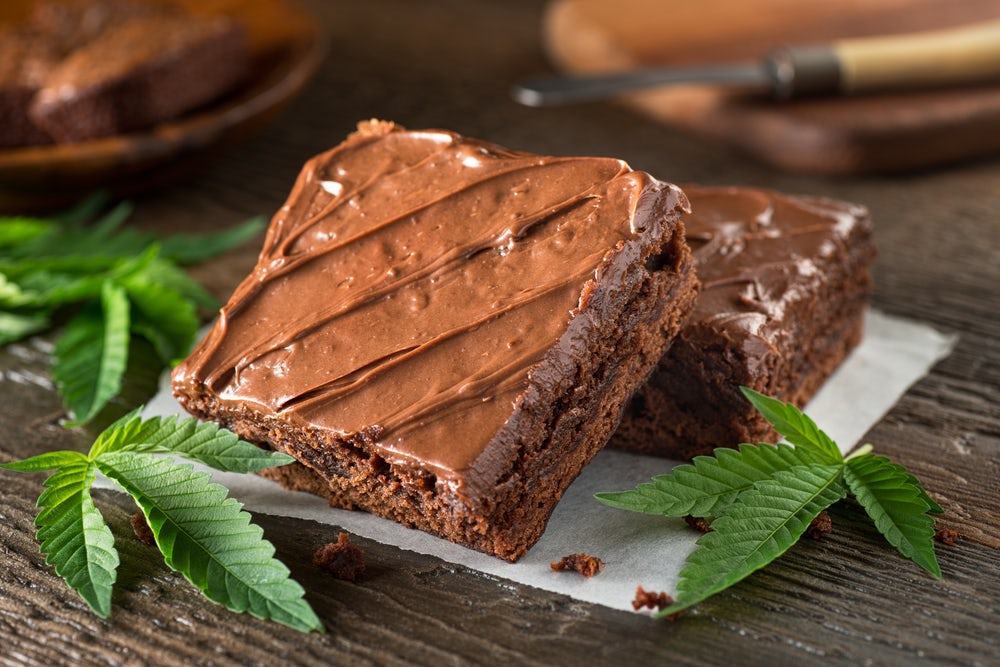
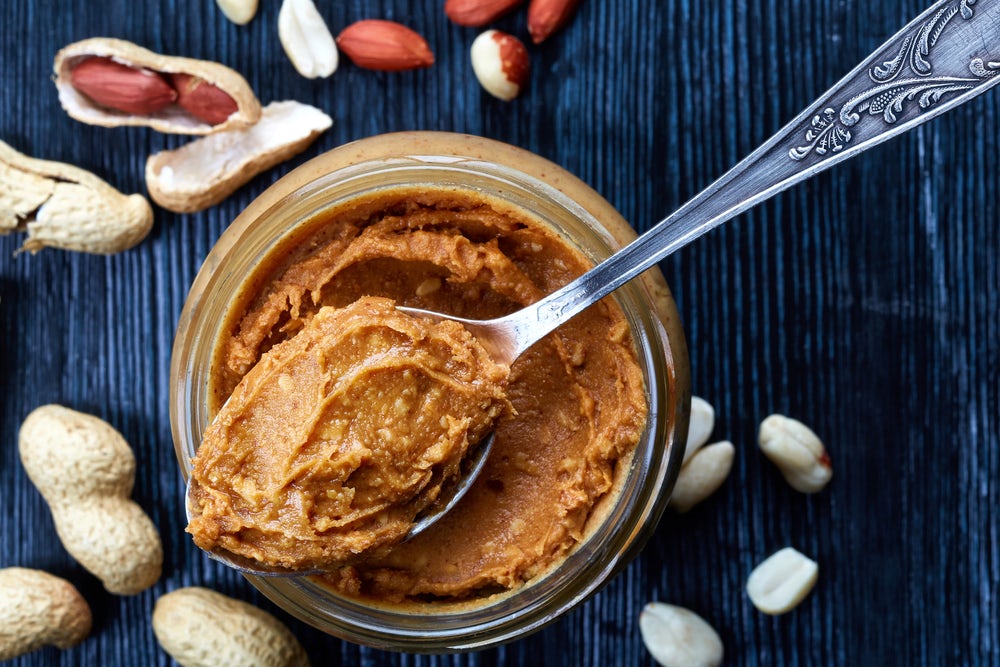
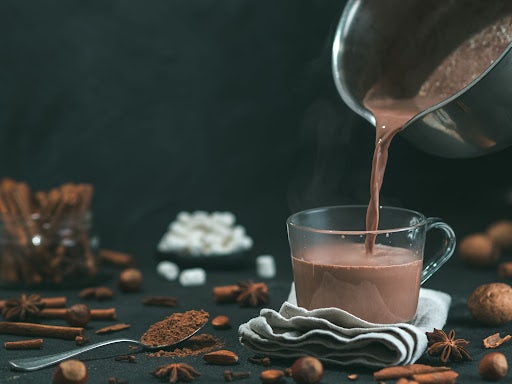












Have you actually tried making cannabis infused peanut butter with raw peanuts? Because raw peanuts taste like crap.
To make peanut butter you use roasted peanuts, no matter if they’re shelled or unshelled. Also most unshelled peanuts come salted which some folks may not want, but you can find roasted unsalted unshelled peanuts for those of us with high blood pressure.
Blanched peanuts, which are usually steam cooked to remove the skins, can also be used to make peanut butter, but they don’t taste as good as roasted peanuts.